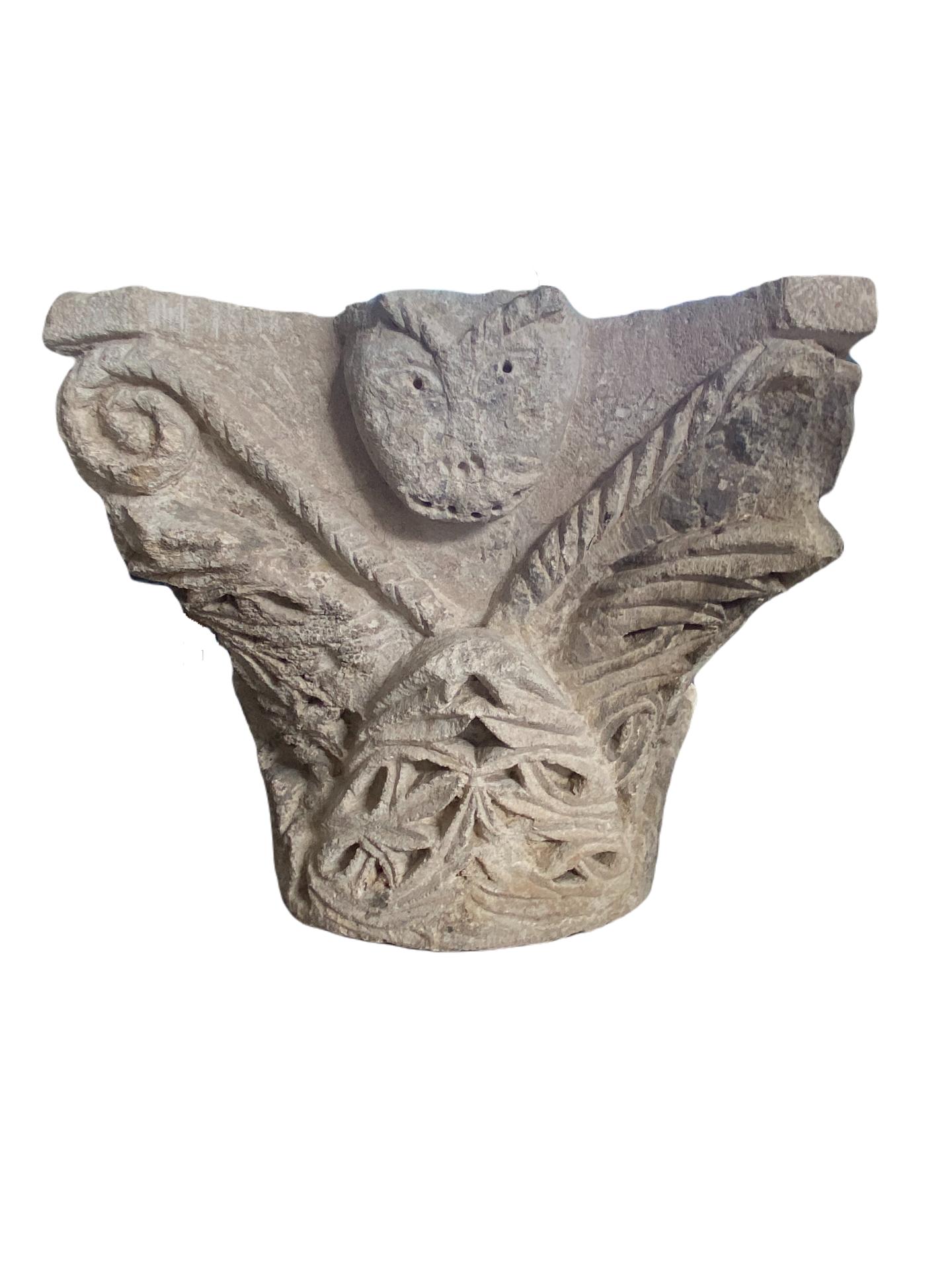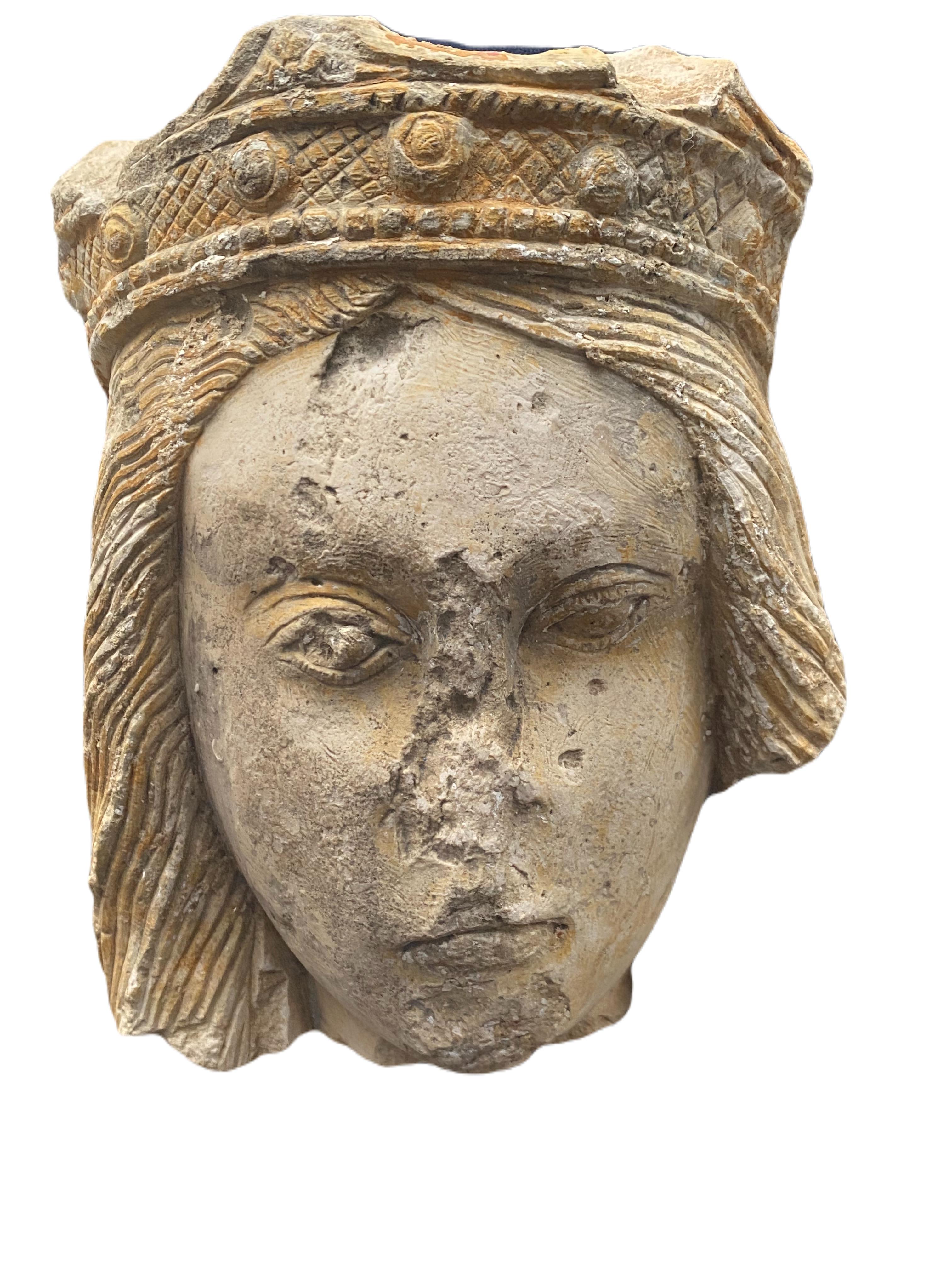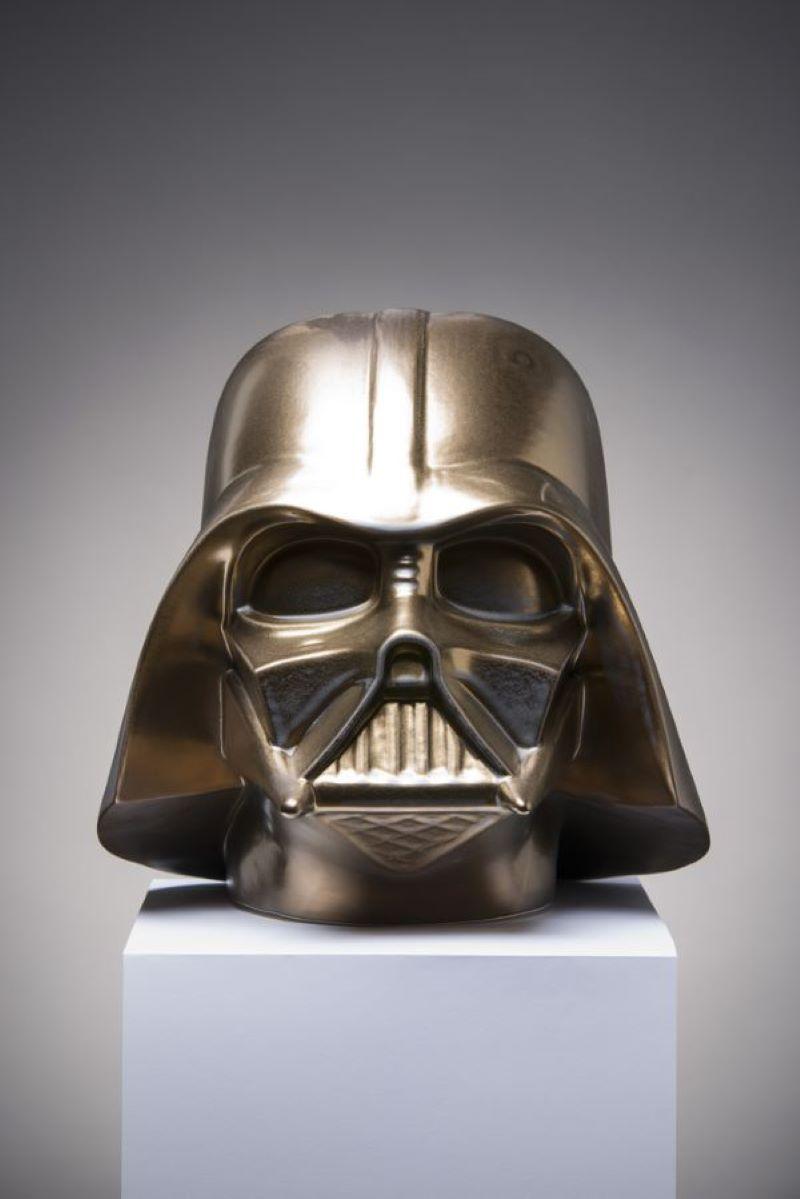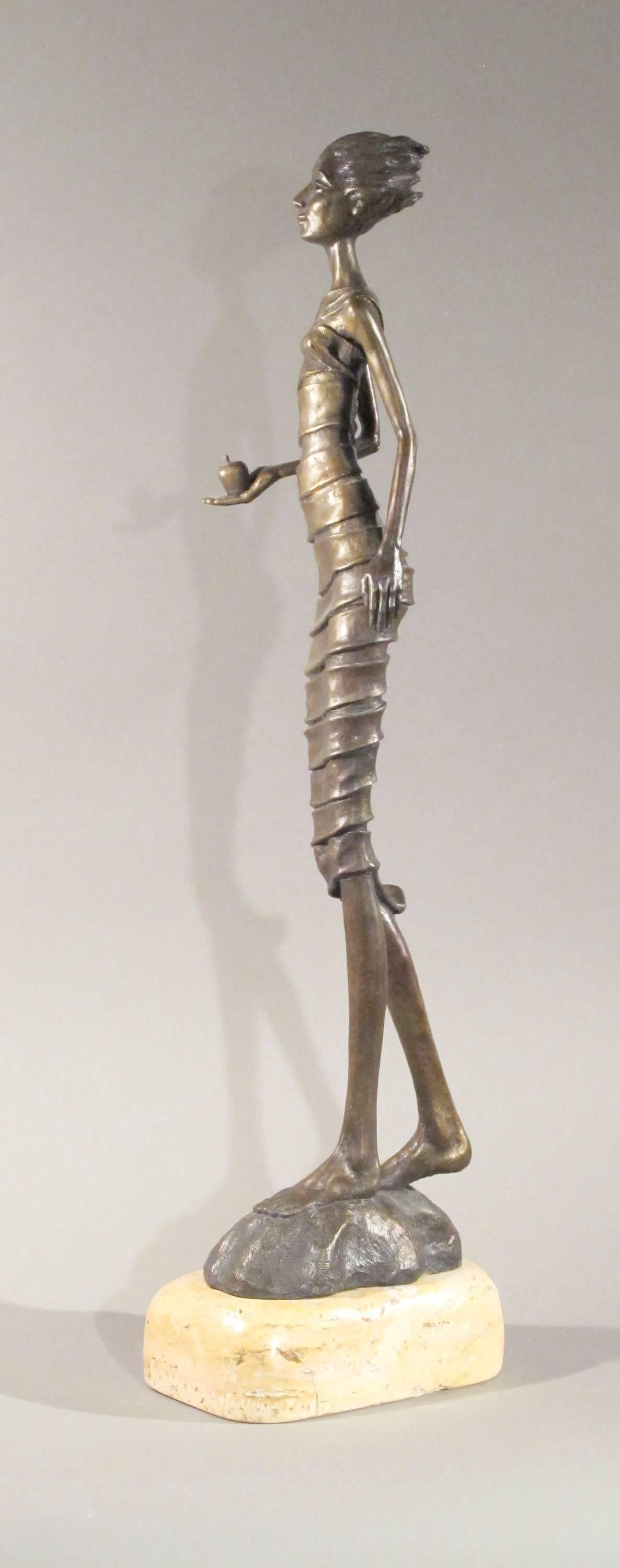Items Similar to Ancient Deity
Want more images or videos?
Request additional images or videos from the seller
1 of 10
UnknownAncient Deity2nd - 1st millennium BC.
2nd - 1st millennium BC.
About the Item
ANCIENT DEITY
Seated representation of God
Southern Arabia
Pre sabean
2nd - 1st millennium BC.
Oolite limestone
Height 24,5 cm
Comparable works in the
British Museum/London
Inventory no. 122005 and 122008
Provenance:
English private collection
- Creation Year:2nd - 1st millennium BC.
- Dimensions:Height: 9.65 in (24.5 cm)Width: 2.37 in (6 cm)
- Medium:
- Period:
- Condition:Very good condition.
- Gallery Location:Wien, AT
- Reference Number:1stDibs: LU1143210950832
About the Seller
No Reviews Yet
Vetted Seller
These experienced sellers undergo a comprehensive evaluation by our team of in-house experts.
Established in 1986
1stDibs seller since 2019
Typical response time: 11 hours
- ShippingRetrieving quote...Ships From: Wien, Austria
- Return PolicyA return for this item may be initiated within 14 days of delivery.
More From This SellerView All
- Hl. HieronymusLocated in Wien, WienSt. Jerome 347 Stridon, Croatia - 420 Bethlehem Around 1500/20 Limestone Remains of the original polychromy Height 45 cm The man with the holy name! 347 Stridon, Croation – 420 Be...Category
16th Century Figurative Sculptures
MaterialsLimestone
- Standing EngelLocated in Wien, WienStanding angel with banner Flemish Around 1450/60 Sandstone 60 x 21 x 15 cm This museum figurine shows a standing angel with a banner in his right hand and a small box in his left. The youthful, ageless figure wears a coat held together with a triangular, floral brooch in front of the chest over a long robe. The angel’s gaze is directed forward, his head tilted slightly to the left. The elongated face is sculpted: the large almond-shaped eyes with accentuated upper and lower eyelids are alertly open and sharp eyebrows lead directly into the root of the nose. The straight nose above the pronounced mouth completes the idealized oval face of the angel and his calm, internalized facial expression. What is particularly remarkable, however, is the magnificent curls, which are only partially tamed by a simple headband. As if puffed up by the wind, the hair, which is sometimes streaked in parallel, sometimes wildly twisted and richly curled, stands out dynamically from the ears. The tilted head with these sideways protruding waves of hair thus conveys an immediate impression of movement. The physicality of the sculpture is expressed particularly through this organic, lifelike movement of the loosened hair. The lively overall impression of the figure is further enhanced by the multiple rolled banners that the angel presents to the viewer. The outstretched palm of the right hand appears both intimate and confidential as well as mystically revealing. This banderole winds in gentle curves in front of the figure’s body, throws a fold over the second attribute in the angel’s left hand and falls downwards in a loose manner. The volute-shaped rolled up end of the banner clearly shows the fine texture of the banner and at the same time draws the viewer’s attention to the small cube-shaped box that the angel is holding in its slender, long-limbed fingers. The cube is decorated with a Gothic quatrefoil motif, which is often seen in the architectural tracery of windows, but was also often used to decorate caskets and other small treasures. The sweeping gestures in the presentation of the attributes suggest three-dimensionality, in contrast to the tubular folds at the base of the neck and the intricate draperies in flat and multiple overlapping garment sections. The soft curves of the folds give the impression that the clothing is made of a heavy fabric that falls diagonally down the front and is laid in several bowl folds under the right hand. Overall, the sculptural work testifies to the highest artistic skill, which emphasizes the virtuosity of sculpture in its precious and representative overall impression. The memorable characteristics recognizable here can be seen in comparable pictorial works from Utrecht around the middle of the 15th century, when sculptural art – especially stone sculpture – was characterized by a remarkably high quality. Particularly noteworthy is the accentuated Utrecht head type with an elongated oval face, almond-shaped eyes with heavy lids and dense, vividly protruding tufts of hair framing the head. For example, the figure is comparable to a capital of an angel on the east side of the rood screen of the Joriskerk in Amersfoort (province of Utrecht) from the second quarter of the 15th century. Not only the physiognomy and hair, which in the comparative example stand somewhat more horizontally to one side, but also the garment puff above the girdle are similar. Even more related motifs, such as the cleverly placed bowl folds, can be found on the limestone figure...Category
15th Century and Earlier Figurative Sculptures
MaterialsSandstone
- Nok CultureLocated in Wien, WienNok culture Sitting 500 B.C. - 200 A.D. Terracotta Height 60 cm TL expert opinion of the University of Vienna Prof. Dr. Rudolf Erlach Provenance: Private collection NiceCategory
15th Century and Earlier Figurative Sculptures
MaterialsTerracotta
- Apostel groupLocated in Wien, WienAPOSTLE GROUP ORIGINAL VERSION Flemish/Brabant Around 1500 Oak wood carved Height 37.5 cm, width 12 cm, Depth 12.5 cmCategory
15th Century and Earlier Figurative Sculptures
MaterialsWood
- Pair Flying AngelsLocated in Wien, WienMUSEUM PAIR FLYING ANGELS Brabant/Brussels Around 1500 Oak wood, full round carved Height 40/38 cm These two figures are a pair of flying angels mad...Category
16th Century Figurative Sculptures
MaterialsWood, Oak
- Corpus Christi "ascribed Veit Stoß"Located in Wien, WienMUSEUM CORPUS CHRISTI Nuremberg or Poland/Krakow Around 1490/1500 Workshop of Veit Stoß (1447-1533) ascribed Boxwood carved Height 31 cm This Corpus C...Category
15th Century and Earlier Figurative Sculptures
MaterialsWood
You May Also Like
- Important Romanesque capitalLocated in PARIS, FRThis rare capital of the first Romanesque art presents an ox mask on one side, a monster mask on the adjacent side and two rosettes on the other sides. ...Category
15th Century and Earlier Medieval Figurative Sculptures
MaterialsLimestone
- French crowned gothic queen's head. Champagne.Located in PARIS, FRLarge crowned queen's head with trace of polychromy in half-bump. The crown features a fleur-de-lis and cabochons. The almond-shaped eyes are framed by well-marked eyelids with incis...Category
15th Century and Earlier Medieval Figurative Sculptures
MaterialsLimestone
- Gothic head of an apostle - 13th centuryLocated in PARIS, FRHead of apostle or Christ in carved limestone. Elongated face with a large forehead and long hair with thick wavy locks on the sides. The almond-shaped eyes are underlined by the hem...Category
15th Century and Earlier Gothic Figurative Sculptures
MaterialsLimestone
- Main de LuneLocated in PARIS, FRThis unique cyanotype on limestone was created by Alexandre Onimus during a art residency in Versaille, France. The artist: Alexandre Onimus is a contemporary artist and photograph...Category
21st Century and Contemporary Neo-Expressionist Figurative Sculptures
MaterialsLimestone
- $ 2 from New Zealand (Bronze)By Houben R.T.Located in New York, NYHouben R.T is an Avant-garde painter and draftsman with his own unmistakable voice. Houben was born in Bulgaria and graduated with a degree in painting from the Conservative Art Acad...Category
2010s Contemporary Figurative Sculptures
MaterialsCast Stone, Limestone, Bluestone
- First Bite, female figure holding apple, garden of eden, bronze sculpture WilliamsBy Troy WilliamsLocated in Santa Fe, NMFirst Bite,female figure holding apple,garden of eden,bronze sculpture Williams First Bite, female figure holding apple, garden of eden, bronze sculpture Expressing Situations and Beings in Human Form Sculptor Troy Williams unites the timeless and the contemporary in sculptures of rare beauty and meaning Beyond all the narrative potential of the three obvious physical dimensions of Troy Williams’ sculpture there are many other considerations that contribute greatly to the enjoyment, appreciation, and understanding of his entrancing 360-degree works of figurative art. Among these are the emotional responses and intellectual interpretations that first go into the artist’s creative process and then into every subsequent spectator’s viewings at least somewhat differently each time. Some artists insist on leaving these entirely up to each viewer, but Williams is glad to enrich the experience by inviting the viewer in for a little insight into the artist’s intention. Certain ambiguities and unintended provocations might otherwise arise, as Williams uses original combinations of materials or ideas in highly original ways. For the sophisticated clientele of Glenn Green Galleries Williams specializes in figurative and facial sculptures hewn from fallen woods he finds while running near his home in the mountains of north central New Mexico. Williams has in the past worked with exotic woods, but now avoids them in a desire to protect the people, plants, and animals that depend on a vibrant, healthy, and unexploited local ecosystems. Finding dead and downed wood also introduces an element of serendipitous chance into the sculptor’s process of selection and inspiration. Nature provides an exquisite mass of workable solids, surfaces, patterns, and curves in cottonwood and the many varieties of juniper this sculptor favors. Troy Williams simply rescues these from the elements and then elevates them to timeless treasures by relating them to themes that express our deepest nature. Awake to the most beautiful twists, turns, and striations already present in these found mediums, Williams is naturally and passionately drawn to every stage of freeing the underlying sculpture. Following the wood’s ingrained tendencies is always a creative guide for Williams. Growing up in an Indiana farming community, his dad a family practice doctor and his mother an artist, Troy has always felt an affinity for the earth and especially its mountains. He initially came west to study agriculture at Fort Lewis College in Durango, Colorado, attracted there by a setting where his athletic nature could find full expression. His interest in an agriculture career gave way to his love of the mountains. In order to continue living in them and enjoy the hiking, climbing, and running he also loved, Troy worked for several years in a solar business, progressing from manufacturing to installations to design. On a fortuitous errand for a cousin back home, Troy happened into silversmithing and began producing simple, hammered ear cuffs. At this point the artistic nature that he had earlier suppressed in favor of athletics began to emerge strongly, and he expanded into more complex designs as he learned and mastered goldsmithing and lapidary. Another quantum leap occurred when he made his first copper face for a pendant. He couldn’t wait to see the face on a larger scale and was eager for the challenge of learning another art. He began sculpting metal, then stone, then came upon wood as his medium of choice. Wood had immediate allure: scented, expanding, contracting, and seeming to breathe. Williams was seduced by its warmth, the play of light on the complexion of its grain, and the inherent life force so evident in wood. He also learned to coax creative advantage from some of wood’s pitfalls, like soft spots, tricky grains composed of woody xylem and softer phloem; and to avoid the conditions that make it splinter. A quality of segmentation or fragmentation characterizes Williams’s sculptures and provides great visual satisfaction along with intriguing thematic provocation. One is struck by the beautiful outlines that might never be apparent had Williams not removed segments or created interior voids expressly to reveal them. When sculpting a face, Williams focuses on aspects that are mask-like, floating, and alive with contours that might not be visible were the artist to sculpt the full head. The segmentation in his exquisitely refined female figurative works incorporates solids, hollows, and curvilinear elements for reasons that are at once artistic, philosophical, and experiential. Besides attending basic college art classes, to understand more fully the human figure, Troy spent a summer in Europe...Category
Early 2000s Contemporary Figurative Sculptures
MaterialsLimestone, Bronze
Recently Viewed
View AllMore Ways To Browse
Antique Ancient
Ancient Antique
Ancient Sculptures
Ancient Sculpture
Antique Inventory
Art Bc
Antique Sculptures London
Antique Sculpture London
Ancient Bc
Black Limestone
Deity Sculpture
Ancient Limestone
English 15th
English 15th Century
15th Century English
15th Century English
Antique Black Limestone
1st Century Bc





